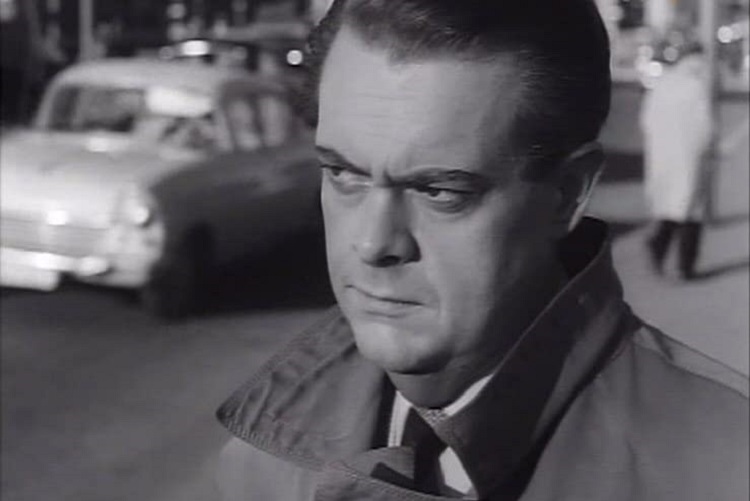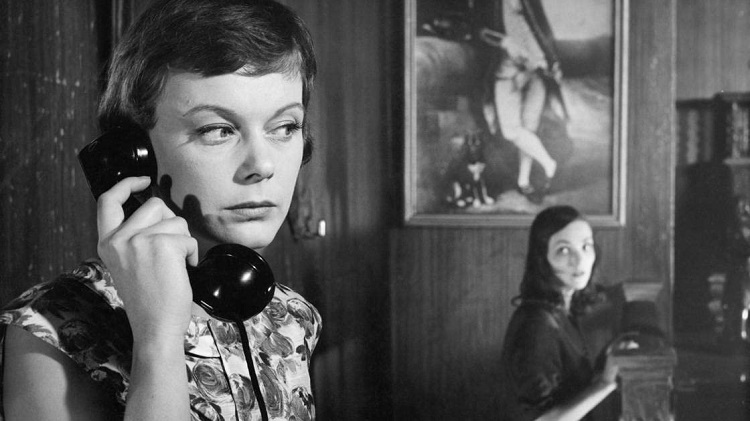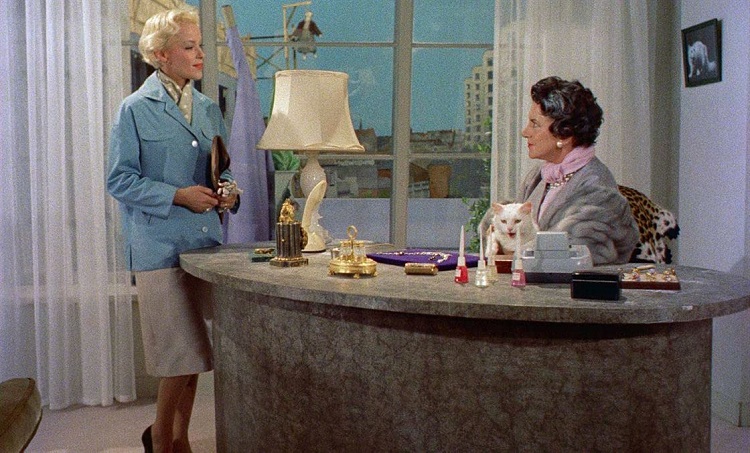Subtext | Classic Swedish Murder Mysteries
“Nordic noir” has been a popular genre in the English-speaking world since the 2000s, with the 2007 Danish drama The Killing’s breakout success a large factor. (In fact The Killing was much more successful in the UK than it had been in Denmark, leading to oddities like the official novelisation being written in English by a British author.) The roots of the genre lie in a rich tradition of crime fiction in the north of Europe, and viewers have recently been given a rare insight into the history of that tradition. A treasure trove of Swedish crime films from the 1950s, restored by the Swedish film institute, recently landed on Netflix.(These are amazing restorations too, with a level of detail that cinema audiences at the time wouldn’t have seen.) Here’s few of my favourites from among them.

The Die Is Cast (1960)
The opening of The Die Is Cast (Tärningen är kastad) is a masterclass in misdirection. We’re shown a shifty-looking man scouting out various locations around the city, each scene followed by a newspaper headline about a murder in that location. This ends with the man apparently in the act of committing a murder disguised as a suicide. Except it turns out that the staged murder is staged in truth, with it (and the headlines) being part of a thriller TV show called The Die Is Cast. The shifty-looking man is Jerk Dromare (Ake Faick, better remembered as a director), the writer of the TV show. Jerk (I did think the other characters were mocking him at first, but it’s a normal Swedish name) proudly boasts of having written eight crime novels and over sixty TV shows. He is infamous for his obsession with developing murderous techniques, something his landlady makes fun of him for. This obsession makes him the perfect target to be framed when a murder takes place at the TV studios, and the crime writer must turn crime solver to save his own neck.
I really enjoyed this film. The TV studio is excellently portrayed, with friendly workplace banter forming a thin skin over a roiling mass of secrets. Jerk’s neighbours, a starving poet and a bombastic tour guide, seem like comic relief at first but are actually central to the plot. Speaking of the plot, while the central mystery is a little slight the tension is expertly crafted. The script was written by two Swedish crimewriting legends, Vic Suneson and Kerstin Ekman. At the time Vic Suneson (a pen-name for Sune Lindquist) was considered one of the “Big Four” Swedish crime writers. In contrast this was the first script written by Kerstin Ekman, and she had only released her first novel the year before. However nowadays she’s considered one of Sweden’s most celebrated writers. She was even part of the Swedish Academy (who select the winner of the Nobel Prize for Literature), though she left when they refused to condemn the death threats that Salman Rushdie received. She remains very popular, and one of her novels (Blackwater, written in 1993) was made into a TV series just this year. Sadly neither of them wrote any more about Jerk Dromare – a shame, as he’s a fascinating character.

The Lady In Black (1958)
The Lady In Black was the first of five films starring the husband and wife detective duo, John and Kajsa Hillman. These were based on a series of novels by Folke Mellvig, though he wrote original stories for the movies and only adapted them into novels later. At the beginning of the film the pair (and their loyal assistant Freddy, played by veteran character actor Nils Hallberg) have just finished up a case and are preparing for a vacation. It’s supposed to be a laid-back trip to the quaint town of Holmfors to stay with an old friend of theirs, who married a mill owner and moved to the countryside. When Kajsa rings up to check on arrangements though, she finds out that this may turn into a busman’s holiday: the mill’s secretary has gone missing, and her friend is worried about her. It turns out that Holmfors has its own dark secrets to uncover.
Part of what makes The Lady In Black work so well is the chemistry between its leads, and it’s really refreshing to see a relaxed married couple in their forties in that role. Karl-Arne Holmsten plays John as a fairly standard leading man of the time, but he’s willing to take a back seat and let Annalisa Ericson as Kajsa take the centre stage as the main protagonist. Their happy marriage is a contrast to that of their hosts, the von Schildens (played by Anita Bjork and Sven Lindberg), who are not having a great time even before a murderous spectre clad in mourning-black makes an appearance. Anita Bjork was also in The Die Is Cast as Rebecca, an actress on the show Jerk wrote.
Director Arne Mattson does a fantastic job with the cinematography in this film, with some very impressive shots. This is something he’d develop even further in the second of the series. What helps this movie even more is that he makes Holmfors feel like a real small town. The background characters are consistent, with some clearly listening in on conversations and gossiping about them later. A scene at a dance in the second half of the film is full of familiar faces. Though few are named and even less have significance to the plot, they feel fully formed. The town itself also feels fully formed, with a clear sense of geography that makes it feel like a real and consistent place.

Mannequin in Red (1958)
The Hillmans returned later that same year, with Arne Mattson remaining behind the camera. Annalisa Ericson and Karl-Arne Holmsten come back as well, of course. Nils Hallberg is back as Freddy, John’s long-suffering assistant, and Lena Grenhagen also returns as Sonja Svensson, a model that Freddy met in Holmfors and who becomes his girlfriend. Two other familiar faces are back, though playing different characters. The story involves a murder at a model agency, with Kajsa going undercover to investigate. Lennart Lindberg, who played one of the murder suspects in The Lady In Black, is the owner’s nephew. And Anita Bjork is back once again as Brigitta Lindell, the owner’s secretary. (The owner herself is played by Swedish theatrical legend Lillebil Ibsen, in one of her rare film roles.) This setup, with the same actors returning to play different characters, is amusingly similar to the setup in The Die Is Cast where Anita Bjork’s character and her fellow actors would play different roles in one of Jerk’s stories each week.
These changes of roles were not the only difference between The Lady In Black and Mannequin In Red, though. As if to match their titles, the second in the series had moved from black and white to full color. This is part of what made the film so influential, as Mattson experimented with the new medium. Although it’s impossible to directly trace an influence, the film is extremely similar in tone, direction, and even plot to the Italian giallo movies of the 1960s. (Though a lot less gory, of course.) All of this makes the film an important part of cinematic history, but it’s also a really good movie. As with the first Hillmanthriller, the characters in Mannequin In Red have a lot more depth than you might think. One moment that sticks with me is when Anita Bjork’s character reminisces about her family in Paris during the war being murdered by Nazis (presumably for being Jewish), and how she escaped and joined the Resistance. “That was when I decided that I would never be scared again.”
Mattsen and Mellvig collaborated on three more “Hillman” movies, though Annalisa Ericson only returned for the third (Rider In Blue). After that she took an eight year break from acting to return to the stage where she had great success. John Hillman and his assistant Freddy continued through the last two films, in the cases of Vita Fun (released in English under the title The Lady In White) and The Yellow Car. Melvig wrote a few more novels about the Hillmans, before moving into TV writing. Mattsen’s career stumbled in the sixties and seventies, as he tried to adapt to changing public tastes. Yngsjömordet (a dark and disturbing psychological thriller based on a true murder case) in 1966 was his last critical success, and he wound up working abroad on cheap exploitation flicks. Unfortunately this ending to his career has obscured the legacy of someone who was once one of Sweden’s A-list directors.
On that depressing note, that’s the end of our brief tour through the Swedish classics. At least for the moment. There are plenty more classic murder mysteries restored by the Swedish Film Institute for us to dig through, and we may even see some more familiar faces when we do. Until then, vi ses senare!
Images via IMDB and Svensk Filmdatabas

